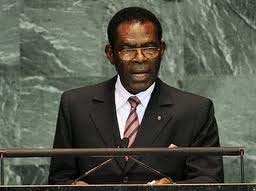Rand, commodities on rebound
leaders are nearing an agreement on how to contain the debt crisis dampening demand for refuge currencies as that boosted demand for South Africa’s assets.
The currency of Africa’s biggest economy was trading at 7,9529 per US dollar in Johannesburg as the US currency weakened by 13 percent.
Given the volatility and swings on the market, investors need to manage any rallies whether equities or currencies between now and December and the only guide are trends.
They should let market trends be their friend in this volatile market.
This will guide investors to exit money-losing trades quickly and search for value in their bets.
There is also need to price political risk, which so far has been the driver behind all these market swings and volatility.
Given the risk appetite, high-yielding assets like the rand have regained favour from investors and the bias is in favour of the rand on the African soil.
We are also seeing a lot of selling on the US dollar as investors are buying high-yielding assets.
The US dollar and the yen declined on sentiment the ECB and the European leaders are structuring a plan to contain the debt crisis.
In Europe the euro snapped up a two-day advanced against the yen and the US dollar on ECB. The US dollar traded little changed at US$1 3523 per euro in London and bought 76,38 yen, from 76,36 yesterday.
The 17-nation euro fetched 103,33 yen from 103,34 yen, after touching 101,94, the least since June 2001.
In London the pound retreated against the euro in as many days .
The pound depreciated by near half a percent to 86,69 to the euro from 87,20.
Given the weak data in the UK at the moment the pound has been under pressure and looks like the market is considering selling the pound and long the euro.
The pound declined against the dollar to trade at US$1,5351 in London.
The Australian dollar rose from a weeklong slumber against the US dollar on sentiment the Europeans are nearing an agreement to contain debt in the eurozone.
The Australian dollar traded at 98,99 US cents in Sydney from 98,33 cents.
The Aussie was facing resistance at 98,99 cents and once a breakout is experienced we are mostly likely to see a rally in the Aussie.
The so-called Aussie bought 75,58 yen from 75,08 yen and earlier dropped to 74,65 yen. New Zealand’s currency was at 78,74 US cents from 78,02 cents.
It bought 60,13 yen from 59,57 yen.
New Zealand’s dollar appreciated to 78,78cents as it continued gains, and gained to trade at 62,78 yen from 62,68.
The New Zealand dollar strength came amid demand for high-yielding assets.
The Aussie dollar looks attractive against the New Zealand dollar given the trading relationship with China and their growth outlook.
On the commodity’s front, gold rallied to US$1 654 an ounce as investors see the bullion as a measure of insurance.
Seasonal trends tend to be positive for gold and this current rally offers investors that store of value in times of market uncertainties in gold once technicrats hint at stabilisation.
Crude oil reversed losses to open trade at US$82,28 per barrel from US$78,01 per barrel.
- Feeback: Prodigy Chinanga on 0772753594 or email to [email protected]









Comments